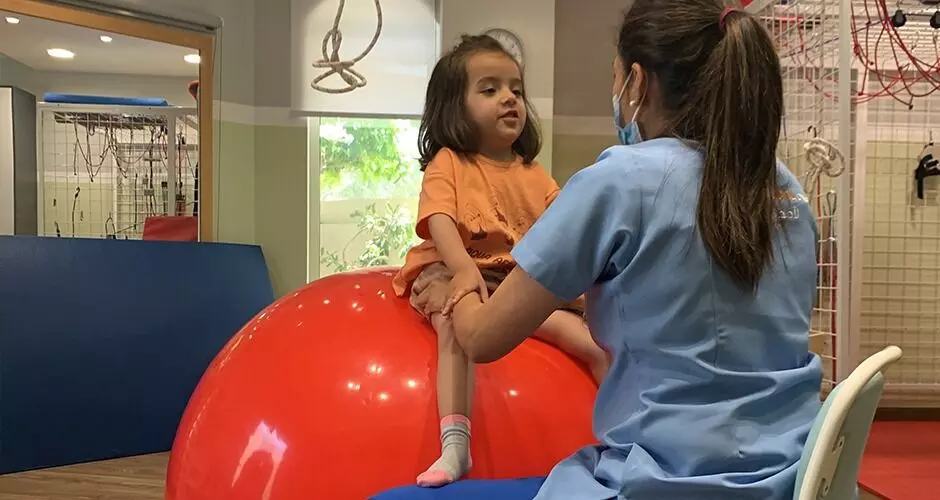Understanding SMA: Dr. Ramesh Konanki speaks on symptoms, diagnosis, and treatment
One in 38 people is a carrier of the SMA gene, a condition that is life-threatening, and the treatment is highly costly in India says Dr Ramesh Konanki
By Neelambaran A
Representative Image
Hyderabad: Spinal muscular atrophy (SMA) is a rare genetic disorder that affects around 4,000 newborns per year in India, as per the Ministry of Health and Family Welfare. Further, one in 38 people is a carrier of the SMA gene. The condition is life-threatening, and the treatment is highly costly in India.
Dr. Ramesh Konanki, a consultant pediatric neurologist at Rainbow Children's Hospital, spoke to NewsMeter on the condition, its types, diagnosis, treatment facilities, and the challenges. Excerpts:
NM: What is SMA, its types SMA and how do they differ in progression?
Dr. Ramesh: SMA (Spinal muscular atrophy) is a genetic disorder due to a defect in the gene SMN1 from birth. Children with a defective SMN1 gene have progressive weakness of muscles. The symptoms can start in infancy or later childhood. Children with type 1 SMA manifest symptoms by 2-3 months of age, with difficulty in neck holding, rolling over, and never attain independent sitting. Due to progressive disease, they die before their 2nd birthday. Children with type 2 SMA can sit without support but cannot attain independent walking. Those with type 3 SMA have difficulty getting up from the floor, walking upstairs, etc. Children with type 1 SMA are most severe and at maximum risk of death due to breathing muscle weakness and swallowing difficulty.
NM: What are the diagnoses available for identifying SMA? And what are the treatments?
Dr. Ramesh: The SMA disease can be detected by a pediatrician or pediatric neurologist based on the weakness pattern. Diagnosis is confirmed by a blood test called MLPA for SMN1 gene deletions. These are easily available and cost between Rs 3,000-5,000 per test. Genetic testing is the most definitive way of confirmation. Some ancillary tests, like nerve conduction test, serum CPK, are done before the genetic testing.
NM: Is genetic testing a preferred option, and are there any limitations to it?
Dr Ramesh: There are three definitive/disease-modifying treatments available currently:
Zolgensma (Gene replacement): This is a single-dose intravenous injection, approved for children with SMA below age 2 years. This is a complementary DNA of the SMN gene, incorporated into a harmless viral vector (Adeno-associated virus/ AAV9) and injected as an infusion.
Spinraza (Nusinersen): This is given as an injection into the spine, once every 4 months, to be taken throughout life. This medicine works by increasing SMN2 protein, which helps in improving muscle function.
Risdiplam: This is an oral medication, comes as powder, and is consumed as a liquid preparation orally; this should be taken daily, lifelong. This also increases the functional SMN2 protein and improves muscle strength; Of these three medicines, only Risdiplam is available in India, to be purchased and used, while the other two medicines need to be imported.
NM: What is the possibility of a child inheriting the condition, and are there any preventive measures?
Dr Ramesh: SMA is an autosomal recessive disorder, which means the parents are usually carriers of the gene mutation; next of the offspring has a 25% risk of recurrence. This can usually be detected by testing during pregnancy. Either through amniocentesis or chorionic villus sampling, fetal DNA can be tested for SMN1 deletion. Parental carrier status can be tested through a blood test.
NM: Can an affected person manage SMA, and are there any therapies available?
Dr Ramesh: Other than disease-modifying treatments (three options mentioned above), supportive care is very important for people with SMA. Physiotherapy, chest care, spine care, managing orthopedic deformities, nutritional management, and timely vaccinations are very essential components of their management in the long term. Rainbow Children’s Hospital at Secunderabad organised a 2-month multidisciplinary care clinic for children with SMA. All specialists involved in the care of children with SMA attend this clinic and help manage these children optimally. They include a pediatric neurologist, physiotherapist, pulmonologist, dietitian, orthopedician, orthotist, and geneticist.
NM: How will the social life of a patient be affected?
Dr Ramesh: Due to restrictions on their mobility, most children and adults with SMA have limited social life. This is directly due to their limited access to many public places and difficulty in transportation. Plus, physical disability stigma itself limits their social participation and their parents social participation.